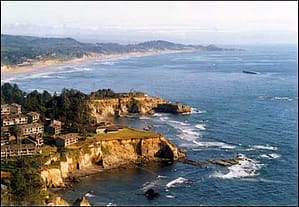Okay, I’ll admit it. I don’t always make the best decisions regarding wine purchases. I taste a lot of different wines from a lot of different wineries from all over the world, and I have rarely ever met a wine I didn’t like. Couple that with the idea that if I taste at a winery, it’s really hard for me to tell them that their baby is ugly. Especially when NO baby is really ugly . . . only perhaps slightly less beautiful than someone else’s baby. So I typically buy at least a bottle from almost every winery I visit.

As a result, I frequently find in my collection wines that were purchased in just those circumstances . . . wines that I have passed over as I go into my makeshift “cellar” to select a wine for Lisa and I to drink with dinner or with friends. Occasionally I pass those wines off to our kids when they are looking for something from “Dad’s Wines,” and occasionally I’ll pull one out for us to enjoy . . . or at least partake of.
This evening is one of those times. While going from bottle to bottle (Lisa frequently accuses me of “fondling” my wines) looking for a likely suspect to accompany leftover Chicken and Orzo soup and a Roast Chicken Salad, I decided to apply a “use it or lose it” test to a bottle that I’ve regretted buying ever since I got it home. Hey, worst case scenario I could always pour it out and pull another bottle. It’s not like I’m low on inventory or anything. Turns out, I was pleasantly surprised.
Last year we spent a week on the Oregon Coast with two other couples, good friends of ours from our suburban Dallas days. We enjoyed a beautiful house overlooking the ocean and Oregon’s trademark craggy coastline and spent a few days touring the Oregon wine country, which is just a bit inland in the Willamette Valley. We tasted (and bought) at several wonderful wineries including Domaine Serene, Domaine Drouhin, Van Duzer, and St. Innocent Wineries (more on each of those in future blog posts).
While Oregon wine culture produces a number of decent varietal examples, Pinot Noir is by far the dominant varietal and it is in Pinot Noir that Oregon wine finds its superior identity. Pinot Noir is a temperamental and care intensive varietal, but when wine-growers have the patience and skill to coax it into its full maturity it produces incredible wines.

The gold standard for Pinot Noir historically is, of course, the Burgundy region of France. Although wine has been produced in the region since the Roman times, it was the Benedictine monks of Cluny who introduced Pinot Noir and Chardonnay (Burgundy’s leading white wine varietal) and whose astute observation of variances in quality and character based on vineyard location and terroir who are really responsible for the wine legacy of Burgundy.
In America, Pinot Noir is grown in California’s Central Coast wine region as well as in the more westerly and northerly parts of Napa and Sonoma. But nowhere in the New World does it shine as it does in Oregon.
On a drive down the coast one day with our friends, we saw a sign announcing “Winery Ahead.” Of course, that’s an irresistible invitation for me and so after one turn off the main highway and a few hundred yards west to the very edge of the shoreline we found ourselves at Flying Dutchman Winery . . . the western-most winery in the United States. Of course the winery doesn’t have any vineyards (too close to the coast) and so they source grapes from a few select vineyards in the Willamette Valley a few miles to the east.
We tasted a few wines and found them to be fairly good, so of course I bought a few bottles. Back home, however, in my racks next to the prizes from Van Duzer, Domaine Drouhin, and the other wineries mentioned above, and next to other wines in my collection from around the world, the Flying Dutchman Pinot Noir wasn’t necessarily an ugly baby . . . just a less beautiful baby.
Imagine my surprise this evening when I opened a bottle to discover a light, delicate, lovely Pinot Noir . . . light ruby in color with a nose exploding with sour cherries and a palate of candied cherries with a little bacon fat mixed in. Beautiful!
Which brings me to the lesson of the day. Taste it all! Be adventurous! You never know when you’re going to be pleasantly surprised!

